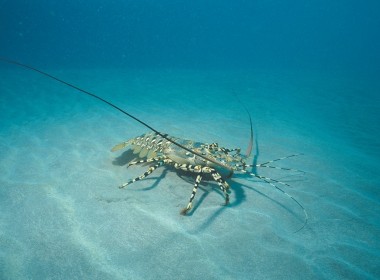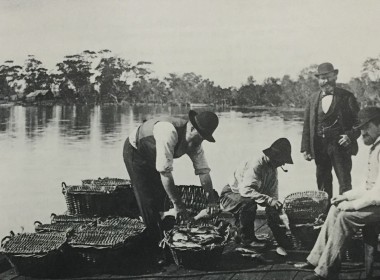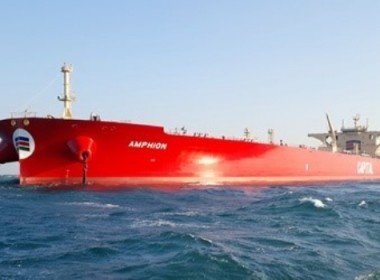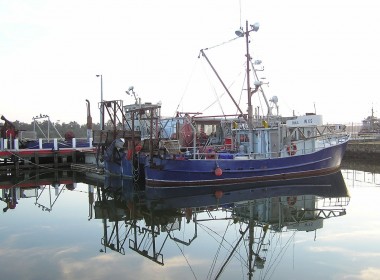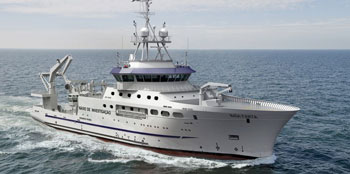OPINION: What will the Auditor General say about Victoria’s fishery management?

The Victorian Government is spending AU$27 million of public funds to cut consumers’ fresh fish supplies by 400 to 500 tonnes in order to double the number of recreational fishers and to benefit business interests.
How did governments come to abandon balanced and evidence-based resource sharing reflecting broad community interests, instead focusing on boosting recreational fisher numbers? How did recreational fishing business interests leap ahead of Victoria’s 5.6 million seafood consumers as priority stakeholders in our fish resources?
No Victorian recreational fishers called for their numbers to be doubled so what is happening to government policy decisions here?
The time will surely come when the Victorian Auditor-General’s Office (VAGO) examines the Andrews Government’s investment of $37 million of public funds on the “Target One Million”” policy. Some pointers to future VAGO findings may be found in its 2013 report on the management of freshwater fisheries in Victoria, in the 2011 Future Fisheries Strategy reform proposals and in the Productivity Commission’s 2017 report on the national Inquiry into Marine Fisheries and Aquaculture. Inferences drawn from these three sources point to likely areas of interest to the VAGO.
What happened to community interests and consumers rights?
Until the introduction of the all-waters Recreational Fishing Licence in 1999, no Victorian politician questioned the central interest of domestic consumers in relation to access to the state’s bay and inlet fish resources. The resource allocation principles identified in two parliamentary inquiries (1991 and 2002) were built around recognition that these are common property resources to which present and future generations have a right of access, including access by buying commercially harvested fish. The objectives of the Fisheries Act 1995 clearly prescribed the need for balance in the use of fish resources, to reflect diverse community interests.
However, while these principles and the concept of community interests in resource allocation matters being protected by their elected representatives have never been challenged, they have simply disappeared from sight in Victoria during the past 15 years. It seems that this has not gone unnoticed by Australia’s Productivity Commission.
What the Productivity Commission said
The commission’s report emphasised how the important foundations that guide high level policies rely on judgements of the community’s preferences on how its resources should be used. Our system of government depends on our elected representatives to make these judgements on behalf of the community.
The report pointed to Victoria when commenting on arbitrary allocation decision-making lacking proper consideration of the most valuable use of fish resources. It highlighted the Victorian Government’s 2014 decision to phase out commercial net fishing in Port Phillip for the express purpose of increasing the number of recreational fishers to one million by 2020. This was given as an example of arbitrary decisions “significantly affecting livelihoods and social amenity … with significant adverse impacts on current users”. Compared to other jurisdictions, the commission observed that Victoria has ventured furthest into the realm of arbitrary allocation decision-making which lacks proper consideration of the most valuable use of fish resources.
The commission stated the need for governments to have clear and detailed allocation policies and transparent processes for changing allocations. They specified the need for policies to be evidence-based and transparent in their application. They identified Victoria among states that should implement harvest management policies to ensure consistency with agreed standards across all fisheries. They also identified Victoria among states which lack clear and publicly-available allocation policies to guide changes in resource sharing arrangements.
Victoria’s 2011 Future Fisheries Strategy reform proposals
The Commission’s comments matched those made in Victoria’s 2011 Future Fisheries Strategy reform proposals which noted that the state’s harvest strategies ranged from sophisticated to non-existent. The proposals acknowledged that, “Without harvest strategies, critical decisions for the fishery are more likely to be ad hoc and more likely to be the product of compromise rather than being evidence based.“
The discussion paper questioned governments’ role in developing fishing sectors, citing fish stocking and fishing infrastructure as examples. It identified clarification of this issue as essential to setting a foundation for fisheries management and for investment in future management strategies. That conversation never proceeded when the reform process was shelved in 2012.
Victorian Government’s focus since 2014
Two years later, the Andrews Government’s “Target One Million” policy leapt far beyond longstanding recreational fisheries development activities by committing $27 million to remove sustainable commercial net fishing from Port Phillip as part of its strategy to boost recreational fisher numbers. The government’s overarching priority for the fisheries portfolio was to deliver this policy commitment. Lacking any semblance of fisheries management process, this was a government implementing a $37 million investment strategy to achieve a political objective.
While the policy is clearly in line with the recreational fishing industry goals, whether current recreational fishers are keen to see increased competition is questionable. How this stands up as grounds for a major resource re-allocation policy is also questionable, as is the ranking of non-fishing businesses ahead of seafood consumers as fisheries stakeholders.
What happened?
Several factors have influenced the rapid transition of Victorian governments’ recent approaches to “sharing” inshore scalefish resources among diverse community interests.
Foremost is the failure of successive governments to formalise and apply the resource allocation principles identified in the 1991 and 2002 parliamentary inquiries, leaving the way open for the re-allocation-by-buy-out approach adopted during the 2000s. The ambitious Future Fisheries Strategy proposals could have remedied this situation by instituting reforms which included setting out, “new objectives and principles to guide the management of fisheries.”
Had these proposals been finalised and implemented they would have largely addressed the Productivity Commission’s criticisms of Victoria’s resource allocation approach. However, after consultation resulted in confusion and resistance among stakeholders, the proposals were shelved. Subsequently, the lack of a clear vision and agreed strategies and decision rules led to the predicted continuation of ad hoc decision processes for inshore fisheries, devoid of any consideration of the solid body of biological, economic and social evidence.
Lacking a structured and principled policy framework, the 2000 advent of re-allocation-by-buy-out quickly reduced governments’ view of stakeholder interests to those of commercial and recreational fishers. Previous commitments to the community’s right of involvement in resource re-allocation and consumers’ rights of access to local seafood were quietly forgotten. Whether consciously or not, governments were able to shed their responsibilities to the two largest groups of fisheries stakeholders.
Under the combined weight of these factors, it is not surprising that, in 2014, in responding to lobbying from recreational fishing business interests, the government announced the phase-out of commercial net fishing in Port Phillip, with the aim of boosting recreational fisher numbers to one million. The denial of 20 years of solid research and the fact this policy decision was clearly inconsistent with the objectives of the Fisheries Act 1995 – supposedly the bedrock of government policy – seemed immaterial.
What will the VAGO say?
In the 2013 report on the management of freshwater fisheries, the VAGO made repeated references to the Department of Primary Industries’ (DPI’s) failure to discharge its legislated responsibilities. It made several references to the objective of the Fisheries Act 1995, pointing out the DPI’s shortcomings in delivering “balanced and sustainable outcomes“.
The report was critical of the lack of a, “policy that could be used as a framework for developing harvest strategies“. It noted that such a policy was vital for ensuring consistency and transparency for harvest strategies and for measuring the performance of management activities. Without an “integrated strategic plan”, how could the DPI deliver the act’s objectives effectively? As things were, fisheries planning and management was hamstrung by the lack of “an effective performance reporting framework” clearly aligned with the “core legislative objectives”.
While the VAGO levelled these and many other criticisms at the DPI, much of the fault lay with successive governments. It was governments who had failed to formalise and apply resource allocation principles identified in parliamentary inquiries, and it was governments who had stripped the DPI of research and other capabilities over many years. If the results were judged to be ad hoc, inconsistent and compromise-riddled – as warned in the 2011 Future Fisheries Strategy document – who could be surprised?
The report concluded that the shelving of the proposed reforms was a “missed opportunity” as the reasoning behind them was sound and their implementation, “would have addressed a range of issues identified in this audit”.
From these observations it is not hard to see that a future VAGO audit might take a critical view of successive governments’ performance in fish resource allocation. In particular, what might a VAGO audit make of the commitment of $27 million to close up to 43 viable family businesses and a sustainable 400- to 500-tonne source of fresh seafood in order to attract more recreational fishers to Port Phillip? All this as part of the overall $37 million “strategy” aimed at boosting recreational fisher numbers, while lacking any form of plan and performance measures.
Where does this leave us?
A current FRDC fisheries performance review program (FRDC 2014-235) indicates that other Australian jurisdictions are committed to building on a shared view of strategic and principled policy, planning and management arrangements aimed at achieving balanced outcomes benefiting all community interests. There is little evidence of major investments of public funds aimed at developing recreational fisheries at significant cost to domestic seafood consumers.
What effect the Productivity Commission’s 2017 comments or the prospect of a VAGO audit may have on a future Victorian government remains to be seen. The immediate challenge lies with the newly-appointed board of the Victorian Fisheries Authority: how objective, independent and visionary will they prove to be in discharging their responsibilities under the Fisheries Act 1995?
Until these questions are resolved, what the future holds for Victorians’ access to their inshore fish resources is uncertain. On the present course it is hard to see commercial fishing in the bays and inlets surviving. What will be interesting to see is whether any other jurisdictions follow Victoria’s example or whether they will adhere to the inclusive and principled ideals already evident among them, as extolled by the Productivity Commission.
Ross Winstanley is a fisheries consultant and a current member of the statutory Victorian Fisheries Advisory Council and Recreational Fishing Roundtable Forum. He has been the chair of Fisheries Victoria’s fisheries assessment workshops and is a former Director of Victorian DPI’s Marine and Freshwater Research Institute, Snobs Creek fish hatchery and Queenscliff Institutes


